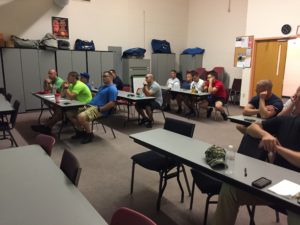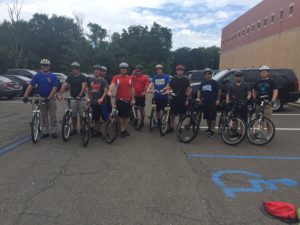Wounded…
The problem is that you can be wounded in your mind as well as your physique.
Marco Pantani
A crash changes lives. The injury is real. The scars prove it.
For some, getting over it and moving on is not very difficult. For others the fear paralyzes. It prevents them from experiencing the joy they once felt. It imprisons them in a world that threatens, not promises. It causes them to deny that which they love to prevent further loss.
I understand the “wounded mind.” Let me tell you about two experiences in my life. In the 90’s, I was in a car crash. Later, even when the doctor cleared me to drive, I was afraid. I coudn’t bear to get behind the wheel again, until finally my wife told me I couldn’t stop living and she wouldn’t drive me anywhere. I had to face the reality, no, the fear, of driving in order to continue living my life. And of course, my wounded mind healed.
Then nearly six years ago, I crashed on my bicycle. It was serious. Broken clavicle, broken ribs, torn bicep tendon, broken thumb, chest bleed, brain bleed. Medevac to trauma hospital. In the trauma unit for 9 days. I have no recollection of the event itself. I “wasn’t there;” short-term amnesia occurred. I don’t remember falling over. I don’t remember hitting the pavement. I don’t remember the pain of my (not insignificant!) injuries. My first (fleeting) memory was opening my eyes and hearing (realizing? being told?) that I was in a helicopter. I don’t remember much else for the next few days. Just pain. People coming and going. Bad dreams. The sheer joy of seeing my family. Bad food. Friends beside me. LEGO candies (yes, really!)
The wounded mind, though.
After this crash, things were different. I didn’t experience the same prison I did after the car crash. I couldn’t wait to get back on the bike. I was ecstatic when my doctor cleared me to ride again. But my mind was wounded that day too, and I was not the only one. My wife was wounded, too. Her wounds are just not visible…to you. They were and still are real. I still see them each time I say I’m going for a ride. But I can’t stop living. And I won’t stop doing the things I love. She knows that I take the utmost care when I go out on a ride. And she gives me her blessing. But like the scars I still have on my arms and the clavicle that healed out of kilter, our wounded minds are scarred as well. I still think about that day, and she still worries. It’s not the same as it was before. But we have healed.
A couple of days ago, I shared a meme on facebook that is relevant here: “God didn’t add another day in your life because you needed it…He added it because someone out there needs you.” There is something to be learned (and shared) in your experience. You may not know what that is right now. Search it out. Embrace it. Share it. And in that, you will heal.
So if you’ve been through this in some way, know that like your physique, your wounded mind will heal.


